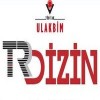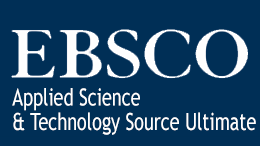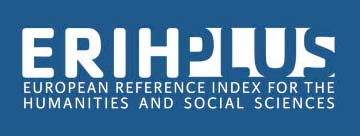Phenolic Compound Profile of Apilarnil Extract: A Potential Source for Functional Food and Pharmaceutical Applications
Abstract
Apilarnil is a bioactive bee product derived from male bee larvae and is recognized as a potential source of bioactive compounds for functional food and pharmaceutical applications. It contains proteins, amino acids, vitamins, minerals, and various bioactive components, which are known for their antioxidant and anti-inflammatory properties. However, data on its phenolic compound profile and biological effects remain limited. This study aims to determine the phenolic compound profile of Apilarnil extract. The extraction was performed using a 75% ethanol–water solution, and the quantitative analysis of phenolic compounds was conducted using the LC-MS/MS method. The results revealed that the extract is particularly rich in chlorogenic acid (29.863 mg/g), p-coumaric acid (6.08 mg/g), and quercetin (3.023 mg/g). The findings indicate that Apilarnil is a valuable natural product rich in phenolic compounds and may serve as a promising source of bioactive compounds for functional food and pharmaceutical applications. This study represents one of the first comprehensive evaluations of the phenolic compound profile of Apilarnil, providing key scientific data on its biological and commercial potential.
Keywords
Apilarnil phenolic compounds LC-MS/MS analysis functional foods pharmacological applications.
Ethical Statement
Etik kurul beyanı alınmamıştır
References
- Silici S. Drone larvae homogenate (apilarnil) as natural remedy: Scientific review. J Agric Sci. 2023;29(4):947–959. doi:10.15832/ankutbd.1293015
- Başol C, Kekeçoğlu M. Apilarnilin kimyasal bileşimi ve biyokimyasal özellikleri: Geleneksel derleme. J Tradit Med Complement Ther. 2023;6(2). doi:10.5336/jtracom.2023-95372
- Abd El‐Wahed AA, Khalifa SAM, Aldahmash B, et al. Exploring the chemical constituents and nutritive potential of bee drone (Apilarnil): Emphasis on antioxidant properties. Chem Biodivers. 2024;e202400085. doi:10.1002/cbdv.202400085
- Pătruică S, Adeiza SM, Hulea A, et al. Romanian bee product analysis: Chemical composition, antimicrobial activity, and molecular docking insights. Foods. 2024;13(10):1455. doi:10.3390/foods13101455
- Şengül F, Vatansev H. Overview of apitherapy products: Anti-cancer effects of bee venom used in apitherapy. Int J Tradit Complement Med Res. 2021;2(1):36–48.
- Scalbert A, Johnson IT, Saltmarsh M. Polyphenols: Antioxidants and beyond. Am J Clin Nutr. 2005;81(1):215S-217S. doi:10.1093/ajcn/81.1.215S
- Minatel IO, Borges CV, Ferreira MI, Gomez HAG, Chen CYO, Lima GPP. Phenolic compounds: Functional properties, impact of processing and bioavailability. Phenolic Compd Biol Act. 2017;8:1–24. doi:10.5772/66368
- Çakar F, Şimşek H, Kaplan M. Apiterapi ve bağışıklık sistemi: Arı ürünlerinin bağışıklık üzerindeki terapötik potansiyeli. In: Bilgili N, ed. Toplum Sağlığına Yönelik Yaklaşımlar. Ankara: Bidge Yayınları; 2024:7–36.
- Özler H. Pollen analysis of the honey from South Anatolia. Uludağ Arıcılık Derg. 2018;18(2):73–86. doi:10.31467/uluaricilik.485004
- Tan P, Jin L, Qin X, He B. Natural flavonoids: Potential therapeutic strategies for non-alcoholic fatty liver disease. Front Pharmacol. 2022;13:1005312. doi:10.3389/fphar.2022.1005312
- El-Seedi HR, El-Wahed AAA, Salama S, et al. Natural remedies and health; A review of bee pollen and bee bread impact on combating diabetes and obesity. Curr Nutr Rep. 2024;1–17. doi:10.1007/s13668-024-00567-3
- Noroozi J, Zare G, Sherafati M, et al. Patterns of endemism in Turkey, the meeting point of three global biodiversity hotspots, based on three diverse families of vascular plants. Front Ecol Evol. 2019;7:159. doi:10.3389/fevo.2019.00159
- Kılıç DD, Güler D, Babacan A, Kılıç M. Amasya’nın ekoturizm potansiyelinin belirlenmesi üzerine bir derleme. Sinop Üniversitesi Sosyal Bilimler Dergisi. 2019;3(2):77–106. doi:10.30561/sinopusd.549503
- Yucel B, Sahin H, Yıldız O, Kolaylı S. Bioactive components and effect mechanism of Apilarnil. Hayvansal Üretim. 2019;60(2):125–130. doi:10.29185/hayuretim.591007
- Inci H, Izol E, Yilmaz MA, Ilkaya M, Bingöl Z, Gülçin I. Comprehensive phytochemical content by LC/MS/MS and anticholinergic, antiglaucoma, antiepilepsy, and antioxidant activity of Apilarnil (drone larvae). Chem Biodivers. 2023;20(10):e202300654. doi:10.1002/cbdv.202300654
- Topal E, Strant M, Yücel B, Kösoğlu M, Margoan R, Dayıoğlu M. Ana ve erkek arı larvalarının biyokimyasal özellikleri ve apiterapötik kullanımı. Hayvansal Üretim. 2018;59(2):77–82. doi:10.29185/hayuretim.455478
- Yilmaz MA. Simultaneous quantitative screening of 53 phytochemicals in 33 species of medicinal and aromatic plants: A detailed, robust and comprehensive LC–MS/MS method validation. Ind Crops Prod. 2020;149:112347. doi:10.1016/j.indcrop.2020.112347
- Ma ZX, Zhang RY, Rui WJ, Wang ZQ, Feng X. Quercetin alleviates chronic unpredictable mild stress-induced depressive-like behaviors by promoting adult hippocampal neurogenesis via FoxG1/CREB/BDNF signaling pathway. Behav Brain Res. 2021;406:113245. doi:10.1016/j.bbr.2021.113245
- Lee M, Rho HS, Choi K. Anti-inflammatory effects of a P-coumaric acid and kojic acid derivative in LPS-stimulated RAW264.7 macrophage cells. Biotechnol Bioprocess Eng. 2019;24:653–657. doi:10.1007/s12257-018-0492-1
Abstract
References
- Silici S. Drone larvae homogenate (apilarnil) as natural remedy: Scientific review. J Agric Sci. 2023;29(4):947–959. doi:10.15832/ankutbd.1293015
- Başol C, Kekeçoğlu M. Apilarnilin kimyasal bileşimi ve biyokimyasal özellikleri: Geleneksel derleme. J Tradit Med Complement Ther. 2023;6(2). doi:10.5336/jtracom.2023-95372
- Abd El‐Wahed AA, Khalifa SAM, Aldahmash B, et al. Exploring the chemical constituents and nutritive potential of bee drone (Apilarnil): Emphasis on antioxidant properties. Chem Biodivers. 2024;e202400085. doi:10.1002/cbdv.202400085
- Pătruică S, Adeiza SM, Hulea A, et al. Romanian bee product analysis: Chemical composition, antimicrobial activity, and molecular docking insights. Foods. 2024;13(10):1455. doi:10.3390/foods13101455
- Şengül F, Vatansev H. Overview of apitherapy products: Anti-cancer effects of bee venom used in apitherapy. Int J Tradit Complement Med Res. 2021;2(1):36–48.
- Scalbert A, Johnson IT, Saltmarsh M. Polyphenols: Antioxidants and beyond. Am J Clin Nutr. 2005;81(1):215S-217S. doi:10.1093/ajcn/81.1.215S
- Minatel IO, Borges CV, Ferreira MI, Gomez HAG, Chen CYO, Lima GPP. Phenolic compounds: Functional properties, impact of processing and bioavailability. Phenolic Compd Biol Act. 2017;8:1–24. doi:10.5772/66368
- Çakar F, Şimşek H, Kaplan M. Apiterapi ve bağışıklık sistemi: Arı ürünlerinin bağışıklık üzerindeki terapötik potansiyeli. In: Bilgili N, ed. Toplum Sağlığına Yönelik Yaklaşımlar. Ankara: Bidge Yayınları; 2024:7–36.
- Özler H. Pollen analysis of the honey from South Anatolia. Uludağ Arıcılık Derg. 2018;18(2):73–86. doi:10.31467/uluaricilik.485004
- Tan P, Jin L, Qin X, He B. Natural flavonoids: Potential therapeutic strategies for non-alcoholic fatty liver disease. Front Pharmacol. 2022;13:1005312. doi:10.3389/fphar.2022.1005312
- El-Seedi HR, El-Wahed AAA, Salama S, et al. Natural remedies and health; A review of bee pollen and bee bread impact on combating diabetes and obesity. Curr Nutr Rep. 2024;1–17. doi:10.1007/s13668-024-00567-3
- Noroozi J, Zare G, Sherafati M, et al. Patterns of endemism in Turkey, the meeting point of three global biodiversity hotspots, based on three diverse families of vascular plants. Front Ecol Evol. 2019;7:159. doi:10.3389/fevo.2019.00159
- Kılıç DD, Güler D, Babacan A, Kılıç M. Amasya’nın ekoturizm potansiyelinin belirlenmesi üzerine bir derleme. Sinop Üniversitesi Sosyal Bilimler Dergisi. 2019;3(2):77–106. doi:10.30561/sinopusd.549503
- Yucel B, Sahin H, Yıldız O, Kolaylı S. Bioactive components and effect mechanism of Apilarnil. Hayvansal Üretim. 2019;60(2):125–130. doi:10.29185/hayuretim.591007
- Inci H, Izol E, Yilmaz MA, Ilkaya M, Bingöl Z, Gülçin I. Comprehensive phytochemical content by LC/MS/MS and anticholinergic, antiglaucoma, antiepilepsy, and antioxidant activity of Apilarnil (drone larvae). Chem Biodivers. 2023;20(10):e202300654. doi:10.1002/cbdv.202300654
- Topal E, Strant M, Yücel B, Kösoğlu M, Margoan R, Dayıoğlu M. Ana ve erkek arı larvalarının biyokimyasal özellikleri ve apiterapötik kullanımı. Hayvansal Üretim. 2018;59(2):77–82. doi:10.29185/hayuretim.455478
- Yilmaz MA. Simultaneous quantitative screening of 53 phytochemicals in 33 species of medicinal and aromatic plants: A detailed, robust and comprehensive LC–MS/MS method validation. Ind Crops Prod. 2020;149:112347. doi:10.1016/j.indcrop.2020.112347
- Ma ZX, Zhang RY, Rui WJ, Wang ZQ, Feng X. Quercetin alleviates chronic unpredictable mild stress-induced depressive-like behaviors by promoting adult hippocampal neurogenesis via FoxG1/CREB/BDNF signaling pathway. Behav Brain Res. 2021;406:113245. doi:10.1016/j.bbr.2021.113245
- Lee M, Rho HS, Choi K. Anti-inflammatory effects of a P-coumaric acid and kojic acid derivative in LPS-stimulated RAW264.7 macrophage cells. Biotechnol Bioprocess Eng. 2019;24:653–657. doi:10.1007/s12257-018-0492-1
Details
| Primary Language | English |
|---|---|
| Subjects | Traditional, Complementary and Integrative Medicine (Other) |
| Journal Section | Research Articles |
| Authors | |
| Publication Date | August 27, 2025 |
| Submission Date | February 6, 2025 |
| Acceptance Date | June 30, 2025 |
| Published in Issue | Year 2025 Volume: 6 Issue: 2 |
IJTCMR
International Journal of Traditional and Complementary Medicine Research





